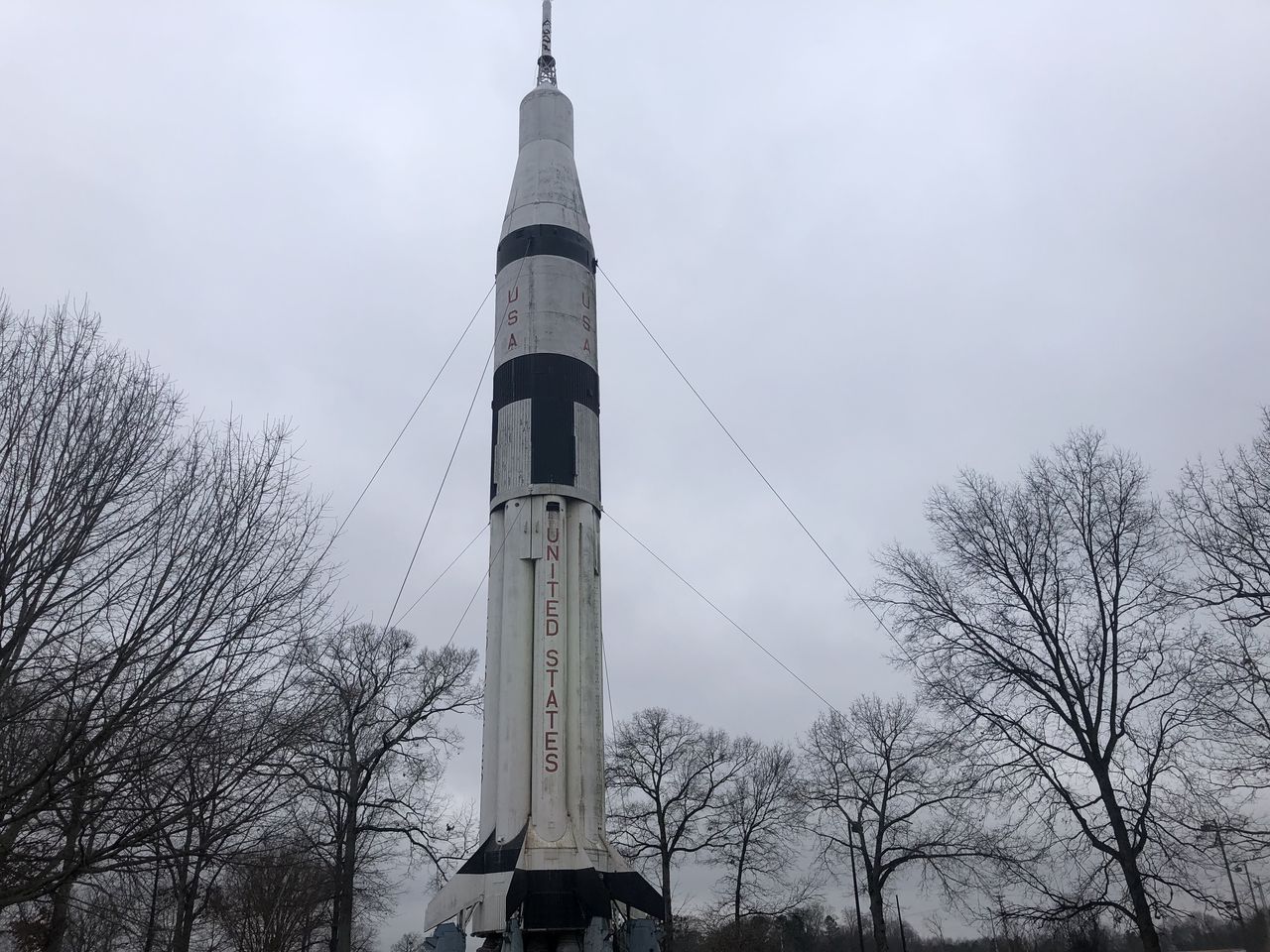NASA updates plans for rocket at Alabama rest stop
Once NASA made clear that the Saturn 1B rocket that has greeted travelers on Interstate 65 for more than 40 years would be taken down, it led to a host of other questions.
Perhaps foremost among those questions: Once the rocket is horizontally grounded, what then?
NASA officials at Marshall Space Flight Center gave some insight Wednesday into the plans for the rocket beyond announcing its imminent demise.
Related: NASA rest stop rocket decays: ‘It’s time for it to go,’ tourism director says
Related: Iconic rocket at Alabama rest stop to be taken down, NASA says
The process will begin, NASA said in an email to AL.com, with the grounding of the rocket at the under-renovation southbound welcome center on I-65 near the Tennessee state line. That process will be the responsibility of the U.S. Space & Rocket Center, to whom the rocket is on loan from NASA.
That process does not figure to be simple. The rocket, in fragile condition, stands 168 feet tall with a diameter of 22 feet. While it has cut an imposing figure on the north Alabama landscape since the 1970s, it will be a task to safely bring it down and require a clearing of land to make room for it. That process is already underway with ALDOT’s renovation at the welcome center that has included the recent razing of the welcome center building at the rest stop.
Once the rocket is on the ground, NASA takes over.
“The USSRC will take the rocket down at the welcome center,” the NASA email said. “NASA will then deconstruct it into small pieces for safe removal from the site and the metal will be reutilized. It will not go to a landfill. The rocket is beyond repair and restoration. Efforts going forward will focus on future plans for the rest stop, which will be led by state leadership.”
NASA did not elaborate on how the metal will be reutilized.
There have also been inquiries into taking ownership of the rocket, including by the small Ohio town of New Concord – the hometown of legendary astronaut and former U.S. Sen. John Glenn. A museum at the former home of Glenn and his wife, Annie, would be the new home of the rocket as envisioned by town officials.
NASA officials indicated the poor condition of the rocket makes shifting ownership essentially a moot point.
“Since the support structure has deteriorated over the years, the damage is too significant to repair, and could potentially pose a structural safety issue if left in place, the focus right now is getting the rocket down safely,” NASA said in the email when asked about other entities expressing interest in taking ownership of the rocket.
While NASA has made clear its plans to dismantle the rocket, what’s not clear is how soon it might happen. NASA said Wednesday no timeline has been set to bring the rocket to the ground.
“Exact dates have not been determined,” NASA said.
NASA announced Jan. 20 that the rocket would be taken down, citing safety issues and its estimate that repairs and restoration would cost $7 million assuming the rocket could withstand it. The space agency also noted that the rocket was too large to be transported intact to a location for repairs, given that it would not clear interstate overpasses.
The rocket, surplus that was no longer needed when it installed at the welcome center in 1979, was not designed to withstand the rigors of being exposed to the outdoor elements for more than four decades, NASA.
